
Enjoy the Island among numerous choices of fun . As the gateway to both the Andaman Sea and Phang Nga Bay, Phuket boasts many stunning islands with palm-fringed white sand beaches, surrounded by clear waters with great diving and snorkeling spots. Most islands are easy to get to on a day-trip or by chartering a boat, and many of the larger islands have accommodation making them ideal for an idyllic island getaway.
Coral Island (Koh Hae)
 Known as Koh Hae in Thai, Coral Island acquired its English name from the Coral Island Resort located on the island. Of course the island does possess some coral off its coastline with some good diving and snorkelling spots. Snorkelling here is well suited to novice snorkellers and children as you can swim to the shallow reef from the beach.
Known as Koh Hae in Thai, Coral Island acquired its English name from the Coral Island Resort located on the island. Of course the island does possess some coral off its coastline with some good diving and snorkelling spots. Snorkelling here is well suited to novice snorkellers and children as you can swim to the shallow reef from the beach.
Coral Island lies just 9kms from the south-eastern tip of Phuket and is only 20 minutes by boat. Its proximity to Phuket has made the island popular with day-trippers who come here to sunbathe, snorkel and swim in the sea. The main beach can get a little busy during the daytime, though at night the island is very quiet.
Koh Lanta Island
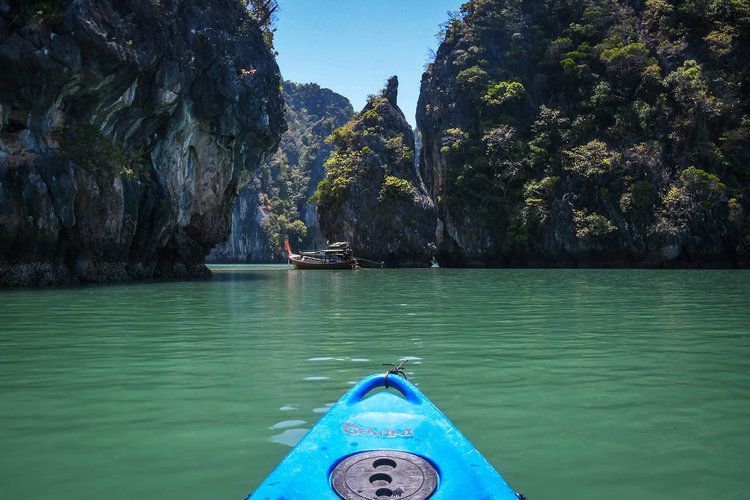 Koh Lanta is actually a group of 52 islands that form the southernmost district of Krabi Province. The two largest islands, Koh Lanta Yai and Koh Lanta Noi (literally “Big Lanta” and “Little Lanta”) are separated by a narrow strait which also includes the small island of Koh Klang. Fifteen of the islands in this group are included in the Koh Lanta National Marine Park. This has allowed development to be checked to some degree though like elsewhere in Thailand, developers have encroached on protected land. When using the name Koh Lanta most people are only referring to Koh Lanta Yai were all the development is concentrated.
Koh Lanta is actually a group of 52 islands that form the southernmost district of Krabi Province. The two largest islands, Koh Lanta Yai and Koh Lanta Noi (literally “Big Lanta” and “Little Lanta”) are separated by a narrow strait which also includes the small island of Koh Klang. Fifteen of the islands in this group are included in the Koh Lanta National Marine Park. This has allowed development to be checked to some degree though like elsewhere in Thailand, developers have encroached on protected land. When using the name Koh Lanta most people are only referring to Koh Lanta Yai were all the development is concentrated.
Koh Lanta has only recently been promoted as a tourist destination, therefore much of the infrastructure is not as good as other resort islands. There are few roads which are mostly dirt tracks which lends the island an undeveloped feel. This makes it very attractive for those seeking a beach paradise without the fast food chains and brand name stores.
The two main Lanta islands are quite mountainous and are covered in dense jungle. There is a large variety of wildlife, making it ideal for trekking. The sea surrounding Koh Lanta is dotted with small islands and coral reefs. These provide lots of opportunities for diving or snorkelling.
Although the beaches on Lanta do not compare to other islands in Krabi province, such as Phi Phi, they are beautiful and clean. The best beaches are along the north and south of the Koh Lanta Yai’s west coast. There are two main settlements on the island. Ban Koh Lanta, in the southern part of the island’s east coast, is the administrative centre. It boasts a post office and police station although not much else. The other is Ban Saladan, a village at the northern tip of Lanta Yai. This is where the ferry pier is located and where you will find most of the restaurants, shops, dive shops, banks and tour offices.
Like other areas along Thailand’s Andaman coast the best time to travel to Lanta is between November and April. This is the dry season, although by April there are occasional downpours. The period May to October is the rainy season. The seas become quite rough restricting boat trips and ferries. Diving visibility usually suffers as well. Many of the smaller resorts actually close down during the rainy season due to the lack of guests and re-open in late October, or early November.
Koh Yao Islands
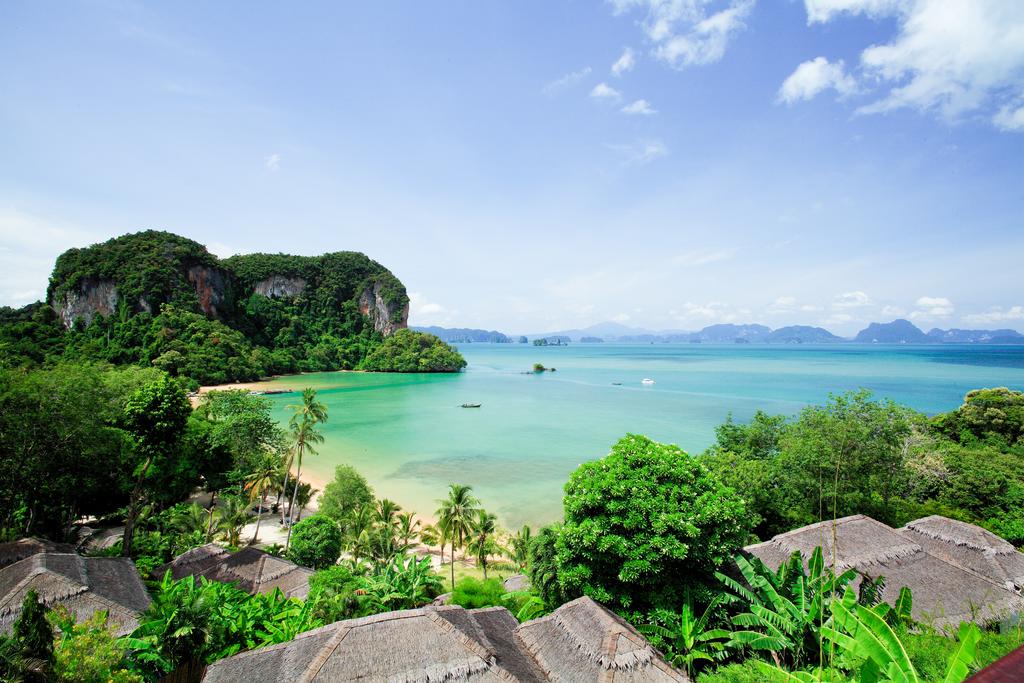 Koh Yao is actually a pair of islands in the middle of Phang Nga Bay, almost equidistant from Phuket and Krabi. These are known as Koh Yao Yai and Koh Yao Noi (Big Yao Island and Little Yao Island respectively), and are seperated by a narrow strait.
Koh Yao is actually a pair of islands in the middle of Phang Nga Bay, almost equidistant from Phuket and Krabi. These are known as Koh Yao Yai and Koh Yao Noi (Big Yao Island and Little Yao Island respectively), and are seperated by a narrow strait.
Koh Yao Noi, the smaller island, is where all the accommodation is located and is also the administrative centre. The island is more populated than its larger neighbour, though its by no means crowded. The beaches do not compare with Phuket’s best, but they are clean and have lovely views of the other islands in Phang Nga Bay. The two nicest beaches are Hat Paa Sai and Hat Tha Khao.
The local population are mostly Thai-muslims, so you won’t find much pork served here, and there are no dogs for that matter either. Most are involved in farming rubber, coconut and cashew nuts or are fishermen.
Phi Phi Island
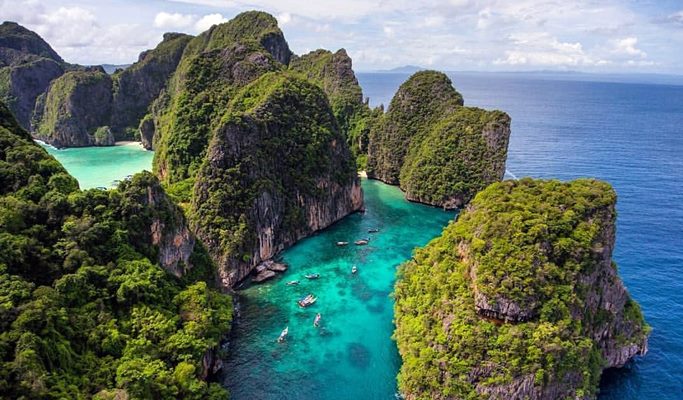 Located in Krabi Province, Phi Phi is 40km from Krabi and Phuket, approximately 1.5 hours by ferry. The worldwide exposure the island gained in the Hollywood film “The Beach” made what was already a famous holiday island even more popular.
Located in Krabi Province, Phi Phi is 40km from Krabi and Phuket, approximately 1.5 hours by ferry. The worldwide exposure the island gained in the Hollywood film “The Beach” made what was already a famous holiday island even more popular.
Unfortunately, parts of Phi Phi suffered a lot of damage due to the tsunami and while recovery is well under way, it will take a little more time before many of the businesses and visitors return.
The name Phi Phi actually refers to two islands, Phi Phi Don and Phi Phi Leh. There are six islands in the Phi Phi island group; Phi Phi Don, Phi Phi Leh, Biddah Nok, Biddah Nai, Yung and Pai. These form a total area of about 35 square kilometres. In 1983, they were incorporated into Had Noppharat Thara – Mu Koh Phi Phi National Park.
Phi Phi Don:
All the development is restricted to Phi Phi Don, the centre of which is Ao Ton Sai (Ton Sai bay), which is where the ferry pier is located. Only a couple of hundred yards on the other side of the narrow isthmus is Ao Loh Da Lam (Loh Da Lam bay), a beautiful and peaceful bay. For a really quiet beach there is Hat Yao (Long beach), a south-facing beach near the southern tip of the island.
There are no cars or motorbikes on the island, and the main area around Ton Sai is quite compact making it easy to get around by foot. Trips to more distant beaches can be made by longtail boat. Most resorts have arrangements to transfer their guests from the ferry pier.
Phi Phi Leh:
Phi Phi Ley is quite spectacular. The main beach, Hat Maya, was the location used in the film “The Beach”. Even more impressive, Ao Pileh is very nearly enclosed by the limestone walls of the island’s cliffs, so that the small bay appears almost to be an inland sea. You can’t stay on Phi Phi Ley but the island is easily reached by longtail boat or speedboat from Phi Phi Don. Boats can be chartered from Ton Sai beach.
Racha Islands
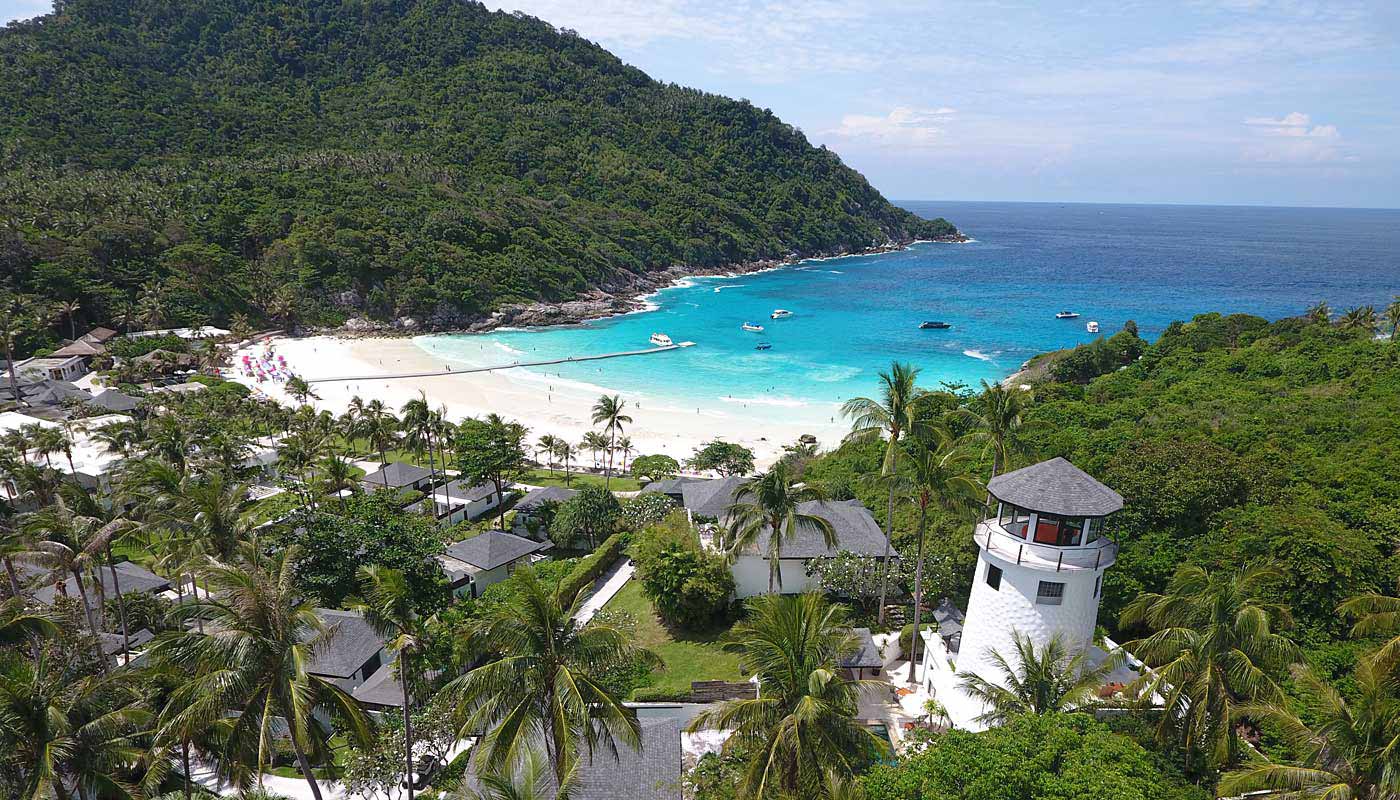 Lying about 20kms south of Phuket, the Racha Islands comprise two islands, Koh Racha Yai and Koh Racha Noi. To confuse matters they are also known as Koh Raya Yai and Koh Raya Noi (Yai means “big” in Thai and as you may have already guessed, noi means “little”).
Lying about 20kms south of Phuket, the Racha Islands comprise two islands, Koh Racha Yai and Koh Racha Noi. To confuse matters they are also known as Koh Raya Yai and Koh Raya Noi (Yai means “big” in Thai and as you may have already guessed, noi means “little”).
The islands possess crystal clear waters and white sandy beaches. They are very popular with divers and snorkellers, with challenging dive sites for advanced divers as well as plenty for beginners and snorkellers.
Similan Islands
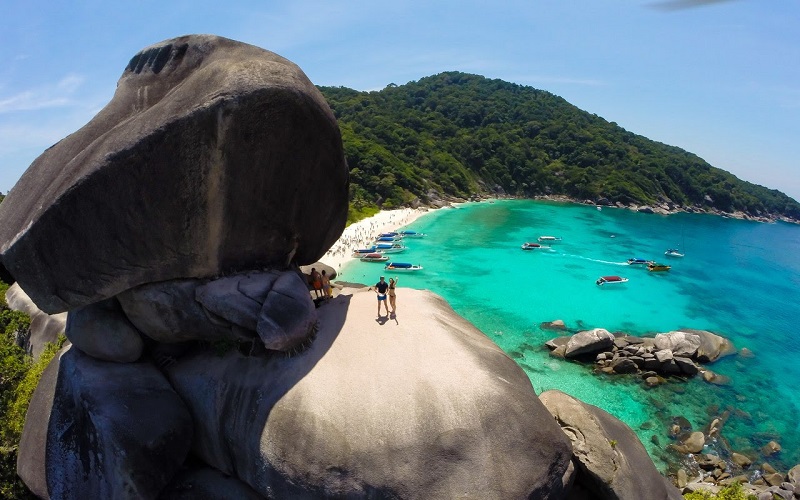 The Similan Islands are a group of nine islands about 100kms northwest of Phuket. The area has been designated the Similan Marine National Park. The Similans are famed for their spectacular underwater scenery and marine life, and is regarded as one of the top ten dive spots in the world. The islands are completely undeveloped, except for Koh Miang, where the park headquarters, a visitors centre and some accommodation are located. There is also a royal residence on Koh Miang.
The Similan Islands are a group of nine islands about 100kms northwest of Phuket. The area has been designated the Similan Marine National Park. The Similans are famed for their spectacular underwater scenery and marine life, and is regarded as one of the top ten dive spots in the world. The islands are completely undeveloped, except for Koh Miang, where the park headquarters, a visitors centre and some accommodation are located. There is also a royal residence on Koh Miang.
The name “Similan” is derived from the Malay sembilan meaning “nine”. Each of the Similan Islands has a number as well as a name. Thais often refer to the islands just by their number, so Koh Miang is Koh Si, meaning “island number four”. From north to south these are as follows:
- 9. Koh Ba-Ngu
- 8. Koh Similan
- 7. Koh Payu
- 4., 5. & 6. Koh Miang (actually two islands, with Hin Pousar often designated as no.6)
- 3. Koh Payan
- 2. Koh Payang
- 1. Koh Hu Yong
The beaches are pristine and although the scenery above water is not as dramatic as the limestone islands in Phang Nga Bay, the smooth granitic rock formations and scattered boulders, together with the crystal clear sea, make up for it.
















